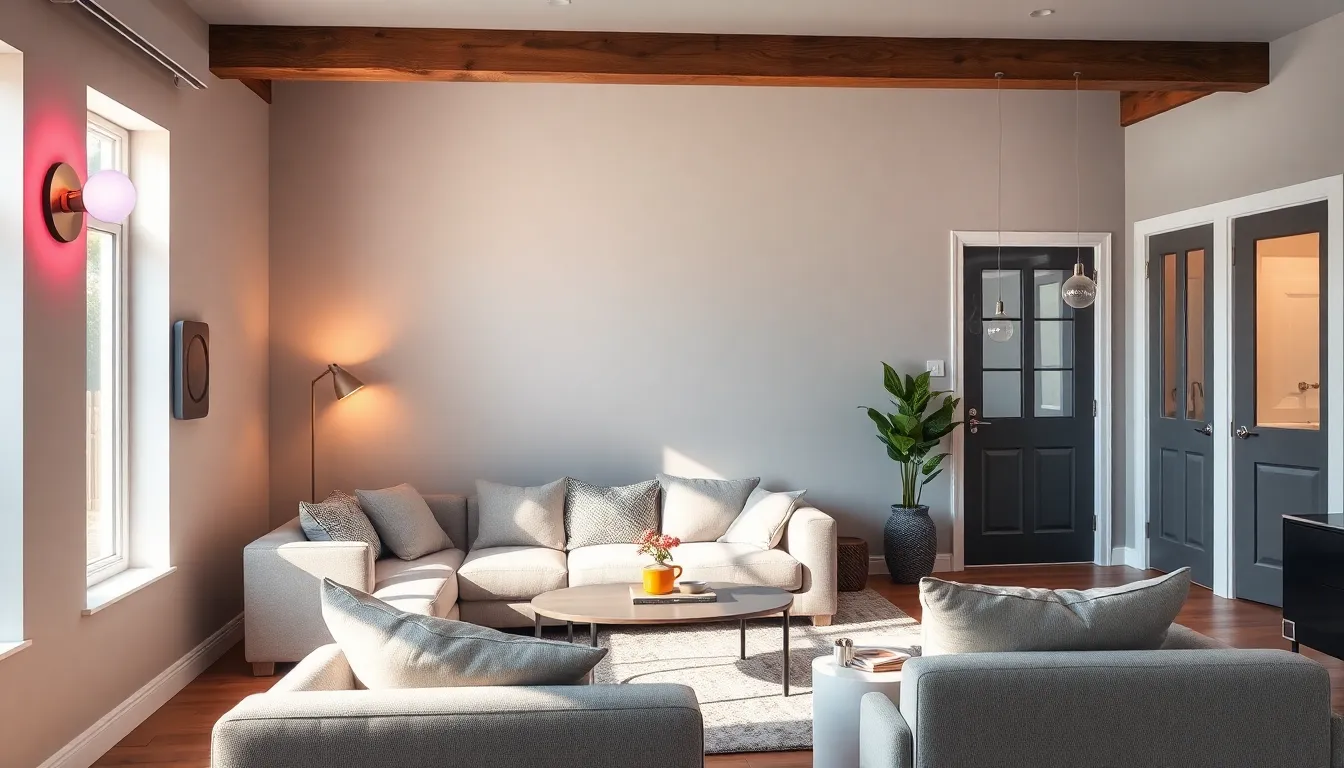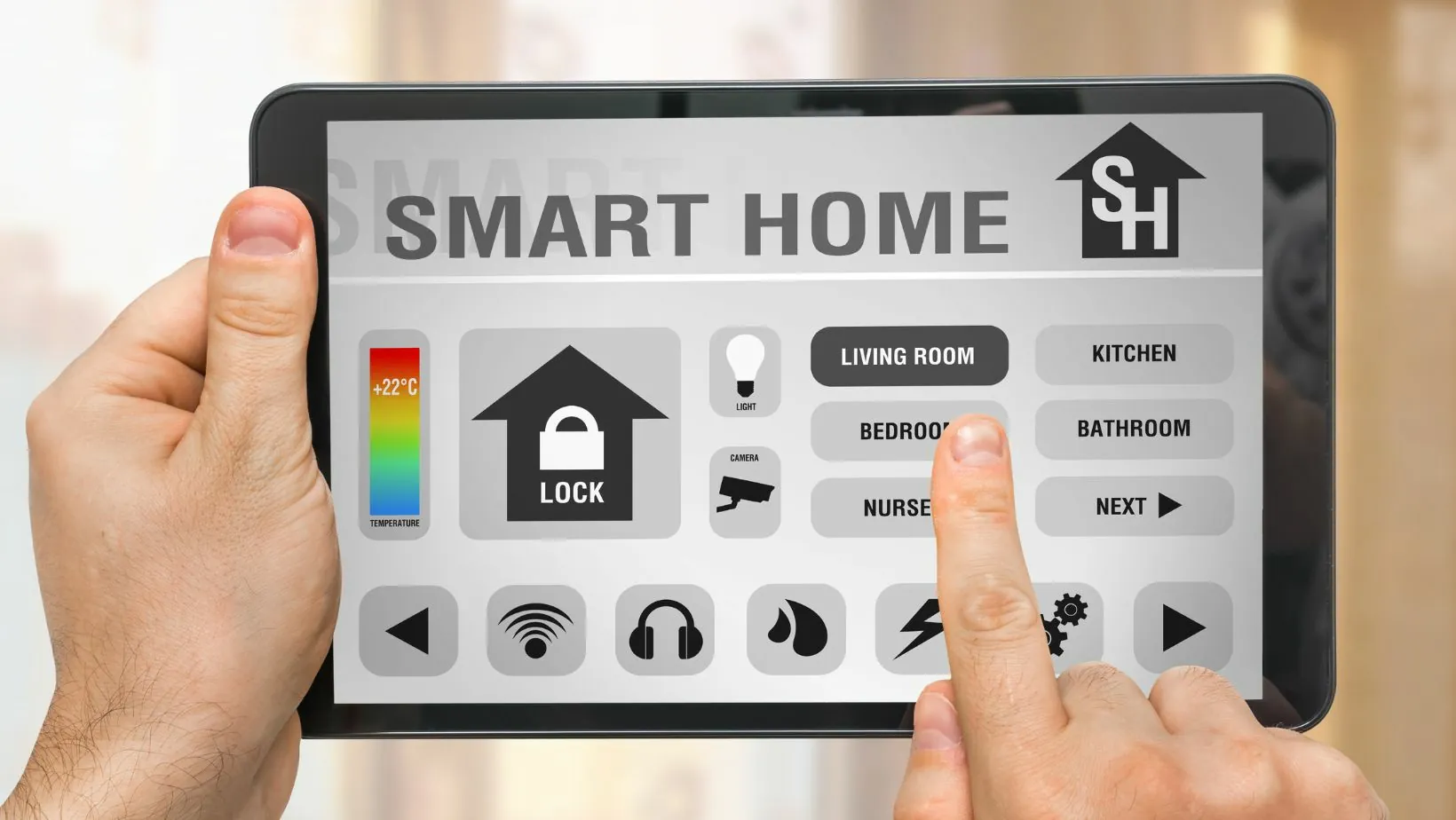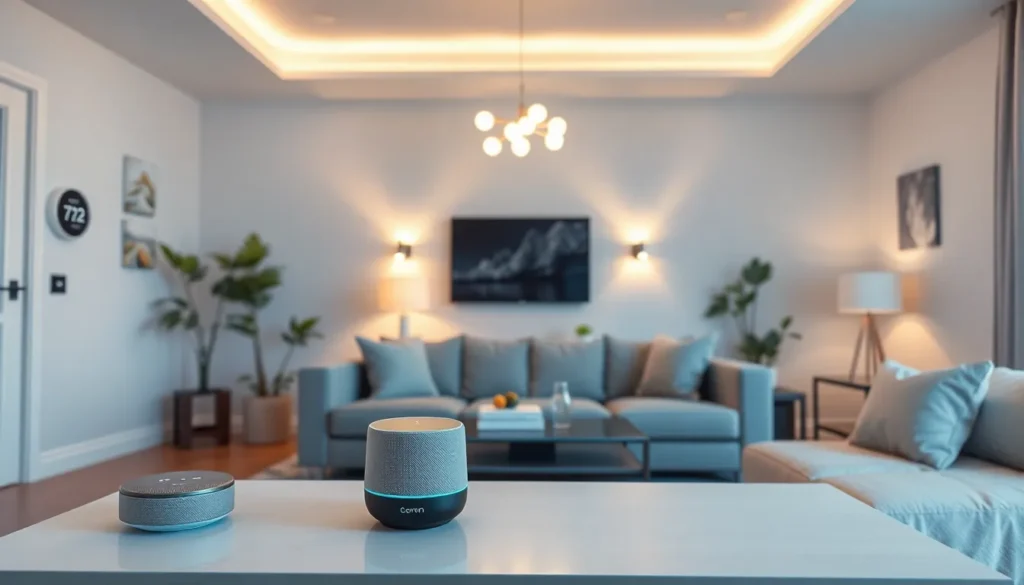Table of Contents
ToggleImagine walking into your home and having it greet you like an old friend. Smart home devices are transforming ordinary houses into futuristic havens, making life easier and a lot more fun. From voice-activated assistants that can whip up a shopping list to smart thermostats that know when to cozy up your space, these gadgets are here to make your life feel like a sci-fi movie—minus the flying cars.
But it’s not all about convenience; it’s about security, energy efficiency, and a whole lot of “wow” factor. Whether you’re a tech enthusiast or just someone who wants to avoid stepping on a Lego in the dark, smart home devices offer something for everyone. So, buckle up as we dive into the world of smart homes, where every room can be a little more intelligent, and maybe even a bit cheeky.
Overview of Smart Home Devices
Smart home devices streamline daily routines by automating various tasks within a household. Voice-activated assistants, like Amazon Echo and Google Nest Hub, play a central role by enabling hands-free control over numerous functions. Smart thermostats, such as Nest and Ecobee, adjust temperature settings based on occupancy patterns, leading to long-term energy savings.
Security systems include smart cameras and video doorbells that provide remote monitoring through smartphones. Users can interact with these gadgets, ensuring peace of mind when away from home. Smart locks enhance security by allowing keyless entries, offering an added layer of convenience.
Lighting systems, including Philips Hue and LIFX, allow users to control brightness and color through mobile apps or voice commands. These systems contribute to both ambiance and energy management by scheduling lights to turn on or off at specified times.
Smart appliances, such as refrigerators, ovens, and washer-dryers, connect to the internet, allowing users to monitor and control them remotely. Featuring automation, these devices offer functionalities like grocery inventory tracking and cooking assistance.
Integration of different smart devices occurs through platforms like Apple HomeKit and Samsung SmartThings. These platforms unify various products, creating a cohesive and user-friendly smart home ecosystem. This interconnectedness enhances overall efficiency and simplifies management.
Smart home technology appeals to diverse users, from tech-savvy individuals embracing innovation to those seeking simple, practical solutions. Advancements in these devices continue to evolve, promising even greater convenience, efficiency, and security in everyday living.
Types of Smart Home Devices


Smart home devices enhance comfort and efficiency. Different categories serve various needs, from lighting to security.
Smart Lighting Solutions
Smart lighting solutions offer flexibility and energy savings. Systems like Philips Hue and LIFX let users customize brightness and color remotely. Voice commands enable hands-free operation. Scheduling features allow lights to turn on or off automatically. Furthermore, these devices support mood setting for gatherings or relaxation. Users can create scenes that suit specific activities, enhancing the atmosphere at home.
Smart Thermostats
Smart thermostats contribute significantly to energy management. Devices like Nest and Ecobee optimize heating and cooling based on user habits. These thermostats learn patterns, adjusting settings to save energy when no one is home. Integration with smartphones enables remote adjustments, providing convenience. Alerts for temperature changes enhance climate control. Users can ensure that their homes remain comfortable while minimizing utility costs.
Smart Security Systems
Smart security systems improve home safety and peace of mind. Options include smart cameras, video doorbells, and motion sensors. Devices like Ring and Arlo offer real-time monitoring through mobile apps. Two-way audio features allow users to communicate with visitors remotely. Alerts for unusual activities notify homeowners immediately. With the ability to integrate with existing smart home setups, these systems create a comprehensive security network.
Benefits of Smart Home Devices
Smart home devices offer numerous advantages that simplify daily living. Their integration provides significant benefits across various aspects of home management.
Convenience and Automation
Smart home devices bring convenience through automation. Voice-activated assistants enable hands-free control, allowing users to manage tasks effortlessly. Smart lighting systems permit remote operation, adjusting brightness and color settings based on preference. Occupants can schedule appliances to start or stop working at specific times, enhancing daily routines. Moreover, smart thermostats learn habits, adjusting temperatures automatically for optimal comfort. Overall, this convenience results in smoother, more efficient household management.
Energy Efficiency
Energy efficiency stands out as a major benefit of smart home devices. Smart thermostats contribute by learning user patterns, thereby optimizing heating and cooling schedules. Energy-saving modes in appliances minimize consumption when not in use, further reducing utility bills. Smart lighting systems, equipped with motion sensors, ensure lights only activate when needed. This integration ultimately leads to lower energy costs and a reduced carbon footprint, promoting eco-friendly living.
Enhanced Security
Enhanced security remains a vital advantage offered by smart home technology. Smart cameras and video doorbells provide real-time monitoring and alerts for unusual activities. Keyless entry systems grant access only to authorized individuals, adding a layer of safety. Integration with security apps allows homeowners to monitor their property remotely, ensuring peace of mind, even away from home. Additionally, smart alarms can notify users of potential break-ins, further reinforcing home security.
Challenges of Smart Home Devices
Smart home devices offer remarkable convenience but come with their challenges. Users often face hurdles related to connectivity and privacy.
Connectivity Issues
Connectivity problems can disrupt the effectiveness of smart home devices. Devices frequently require a stable internet connection for optimal performance. Loss of signal can lead to delayed responses or unresponsive systems, frustrating users. Additionally, compatibility between different brands can create integration challenges, limiting a cohesive smart home experience. Ensuring a robust Wi-Fi network becomes essential for reliable performance of multiple devices connected simultaneously.
Privacy Concerns
Privacy concerns pose significant challenges for users of smart home devices. Many devices collect and transmit personal data, raising potential security risks. Vulnerabilities in software and systems can expose users to unauthorized access or data breaches. Users may hesitate to use voice-activated assistants or cameras due to fears about eavesdropping or surveillance. Understanding device settings and ensuring proper security measures becomes crucial in safeguarding personal information while enjoying the benefits of smart technology.
Future Trends in Smart Home Technology
Emerging innovations drive the evolution of smart home devices. Integration of artificial intelligence enhances the capabilities of voice assistants. Greater personalization enables devices to adapt to user preferences effectively.
The rise of energy-efficient technologies reduces costs while promoting sustainability. Intelligent appliances, equipped with learning algorithms, optimize energy consumption based on usage patterns. Real-time data analytics facilitate better resource management.
Increased interoperability among devices creates seamless ecosystems. Platforms like Apple HomeKit and Samsung SmartThings expand compatibility, ensuring devices communicate efficiently. Enhanced integration allows users to control multiple devices with a single command.
Privacy and security concerns shape the development of new technologies. Manufacturers focus on robust encryption protocols and user-friendly privacy settings. Advanced security features, such as biometric authentication, safeguard personal data.
Rising popularity of voice control enhances user engagement. Smart speakers respond to voice commands, enabling hands-free operations throughout the home. This convenience extends beyond simple tasks to controlling complex systems like home theaters.
Lastly, widespread adoption of smart home devices increases market growth. Predictions suggest the smart home market could reach $174 billion by 2025. Homeowners and renters alike embrace this technology, seeking improved convenience, security, and energy efficiency.







